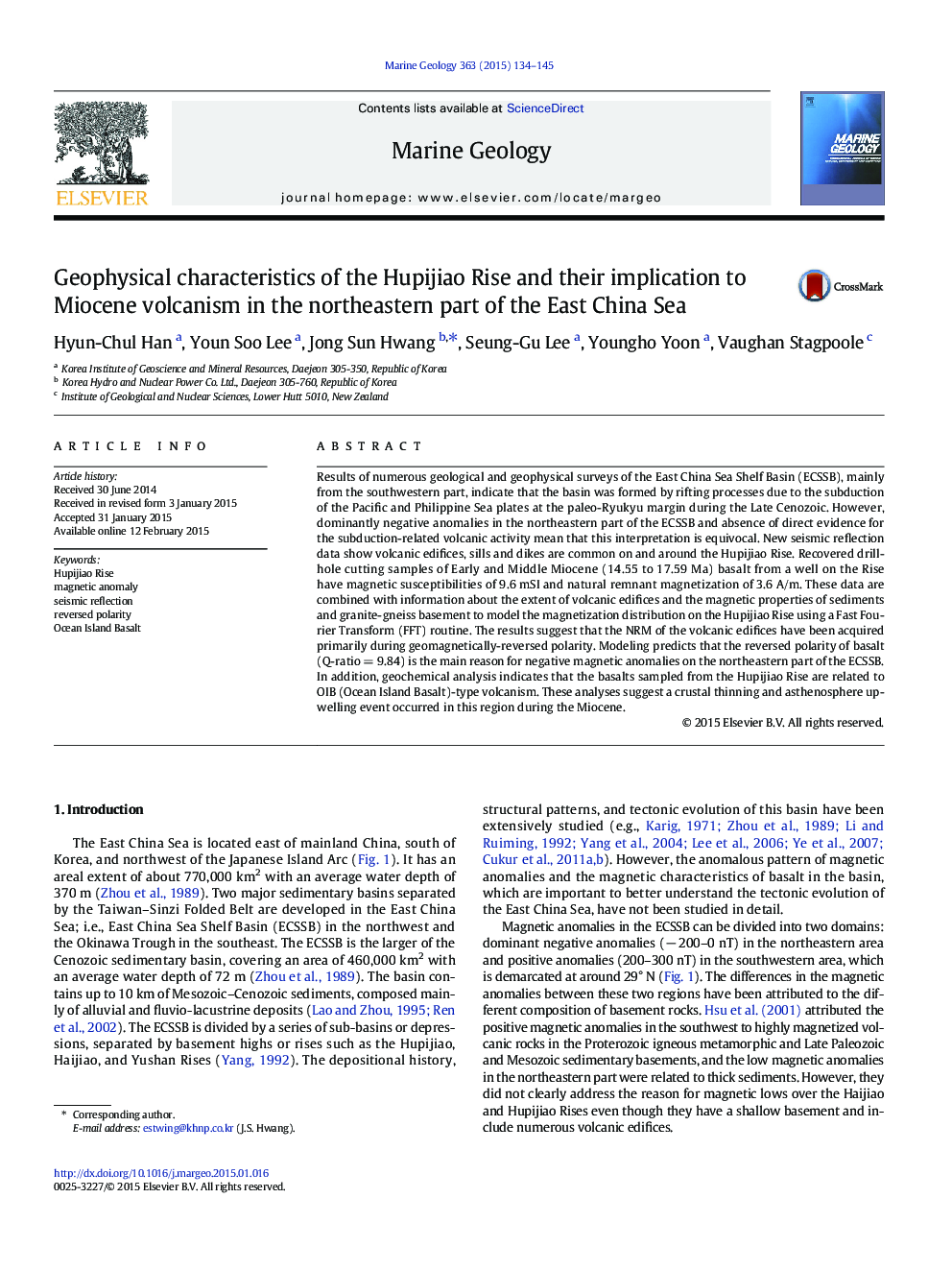| Article ID | Journal | Published Year | Pages | File Type |
|---|---|---|---|---|
| 6441521 | Marine Geology | 2015 | 12 Pages |
Abstract
Results of numerous geological and geophysical surveys of the East China Sea Shelf Basin (ECSSB), mainly from the southwestern part, indicate that the basin was formed by rifting processes due to the subduction of the Pacific and Philippine Sea plates at the paleo-Ryukyu margin during the Late Cenozoic. However, dominantly negative anomalies in the northeastern part of the ECSSB and absence of direct evidence for the subduction-related volcanic activity mean that this interpretation is equivocal. New seismic reflection data show volcanic edifices, sills and dikes are common on and around the Hupijiao Rise. Recovered drill-hole cutting samples of Early and Middle Miocene (14.55 to 17.59 Ma) basalt from a well on the Rise have magnetic susceptibilities of 9.6 mSI and natural remnant magnetization of 3.6 A/m. These data are combined with information about the extent of volcanic edifices and the magnetic properties of sediments and granite-gneiss basement to model the magnetization distribution on the Hupijiao Rise using a Fast Fourier Transform (FFT) routine. The results suggest that the NRM of the volcanic edifices have been acquired primarily during geomagnetically-reversed polarity. Modeling predicts that the reversed polarity of basalt (Q-ratio = 9.84) is the main reason for negative magnetic anomalies on the northeastern part of the ECSSB. In addition, geochemical analysis indicates that the basalts sampled from the Hupijiao Rise are related to OIB (Ocean Island Basalt)-type volcanism. These analyses suggest a crustal thinning and asthenosphere upwelling event occurred in this region during the Miocene.
Related Topics
Physical Sciences and Engineering
Earth and Planetary Sciences
Geochemistry and Petrology
Authors
Hyun-Chul Han, Youn Soo Lee, Jong Sun Hwang, Seung-Gu Lee, Youngho Yoon, Vaughan Stagpoole,
